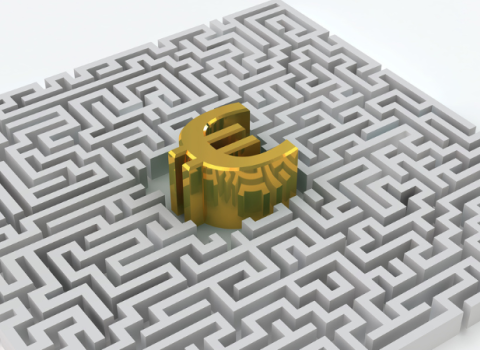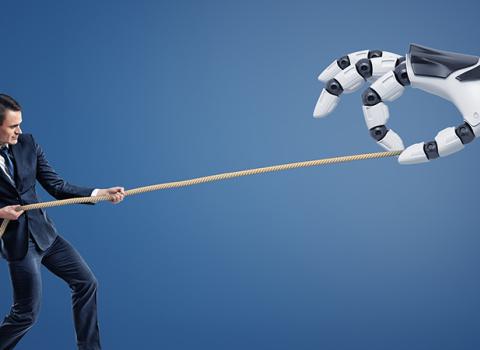Data and football are not the most likely companions. Sure, statistics have exploded into the game and armchair fans have grown accustomed to visuals such as heat maps showing the territory that individual players controlled over the course of a game, or charts of the network of passes that led to a goal.
But there’s a conservative culture in football that values “instinct” over geeky data. Until recently, intelligence gathering was pretty old-fashioned – think tactics scribbled on paper and player signings made on the basis of word of mouth.
For Pablo Rodriguez, Director of Research and Innovation at the Spanish telecoms company Telefónica, involvement in football wasn’t borne out of admiration. That came later. Initially, he looked upon the sport through the sober, detached eyes of a scientist. “It all began with a desire to find real applications for big data,” he says.
Rodriguez, who heads Telefonica’s Barcelona R&D lab, signed a partnership with FC Barcelona, one of the world’s most famous clubs, where he works as a data scientist, helping to develop future playing strategies. Telefónica’s software is able to crunch great swathes of data from games and suggest tweaks that each individual player can make.
Despite slow uptake, many football teams are coming around to the idea of success being a numbers game, said Rodriguez. “You can only prove what you can measure,” he said. The ultimate goal is to build a large repository of information on something more durable than a notepad. His team, made up of 20 researchers, wants to build a comprehensive “Wikipedia of football tactics”.
It’s not the first time Rodriguez has drawn the world of big data towards a new sector. He is currently working on a creative platform for food lovers called “Bullipedia”, an online archive of recipes from the world famous Spanish restaurant elBulli, which is due to be unveiled in 2016.
Seeing computers instead of footballers
While the average person looks at a football match and sees 20 out-field players chasing a ball, Rodriguez, a veteran of several Silicon Valley start-ups, sees the game through the eyes of a computer scientist.
When he first began studying football, he treated tactics like complex networks and analysed whether the intricacy of different teams' passing styles made a difference to the final outcome. It turns out it does.
FC Barcelona, the most successful team he and his colleagues analysed, had the most complicated passing rhythms. To Rodriguez, it resembled something like peer-to peer-network architecture, showing that football and computer science had something to learn from each other.
Telefónica is not the only large R&D company with skin in the game. SAP AG, the German software company, provides analytics to the German national team, which last summer won the World Cup in Brazil. Its researchers place trackers on everything – players, goal posts, balls – creating millions of data points to chew over.
Even students are getting in on the act. A famous story tells how German national team asked 50 students from Cologne’s sport university (Deutsche Sporthochschule Koeln) to compile data on the Brazilian team before the World Cup semi-final last summer. Germany won the game 7-1.
The hardest challenge in all this is probably converting the insights of big data into a language that is understandable for coaches, said Rodriguez. “Handing someone a spreadsheet of data is not very useful.”
Keeping footballers healthy
Footballers’ health is one pretty obvious application of big data. “Computers up to this point have been mostly used to help keep players in good physical condition,” Rodriguez said.
Any player sitting on the side lines with an injury is essentially an idle asset. It’s a situation that creates a massive financial concern for a football club, given the size of footballers’ wages.
Prozone, a UK sports research company, uses data to analyse body movements and can spot, before a physio can, where future injuries may occur. The firm’s services are employed by over 300 clubs around the world.
Will computers drive the next tactics revolution?
Rodriguez credits Valeriy Lobanovskyi, a Ukrainian footballer and later coach who studied engineering at the Kiev Institute of Technology (Kyiv Polytechnic Institut), as the first data pioneer in the game.
“Football was individualistic before him. He put forward this idea of the team as a network, that could play and work together to score,” said Rodriguez.
Having discovered a fellow scientist in Lobanovskyi, Rodriguez eased into an unfamiliar world.
Football’s next revolutionary, according to Rodriguez, was Rinus Michels, coach of Dutch club Ajax and the Netherlands national team who invented the tactical theory of “Total Football”, which basically proposed that every player could play everywhere.
The third tactics transformation was guided by Pep Guardiola and FC Barcelona’s “tiki taka” approach, a style built on short passing and possession, the one Rodriguez has studied most closely.
“In that time, football line-ups have gone from inverted pyramid to normal pyramid to no pyramid and widely distributed players,” he said.
Could someone sitting behind a computer come up with the next game plan? “I don’t have a crystal ball,” said Rodriguez. “But all I do know is that the next revolution will have more randomness built in.”




 A unique international forum for public research organisations and companies to connect their external engagement with strategic interests around their R&D system.
A unique international forum for public research organisations and companies to connect their external engagement with strategic interests around their R&D system.